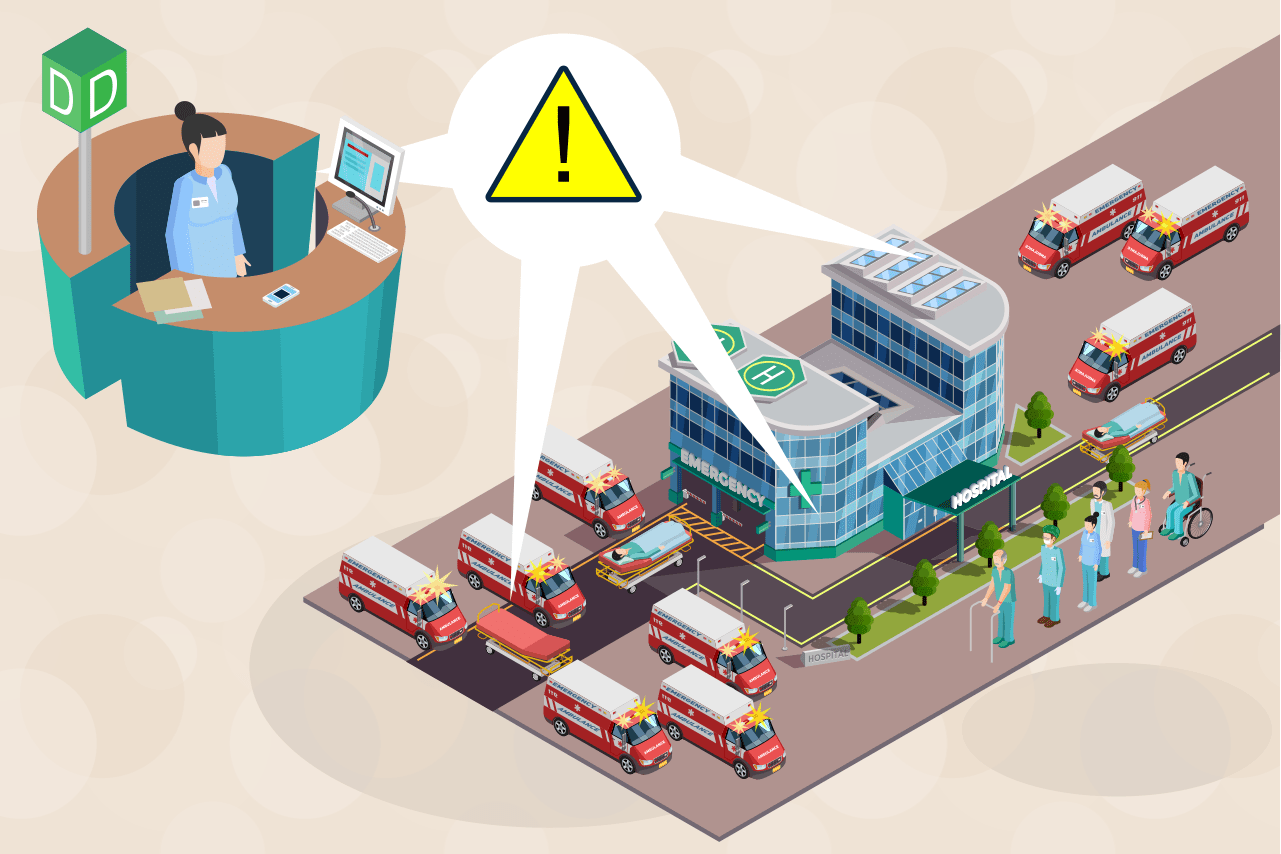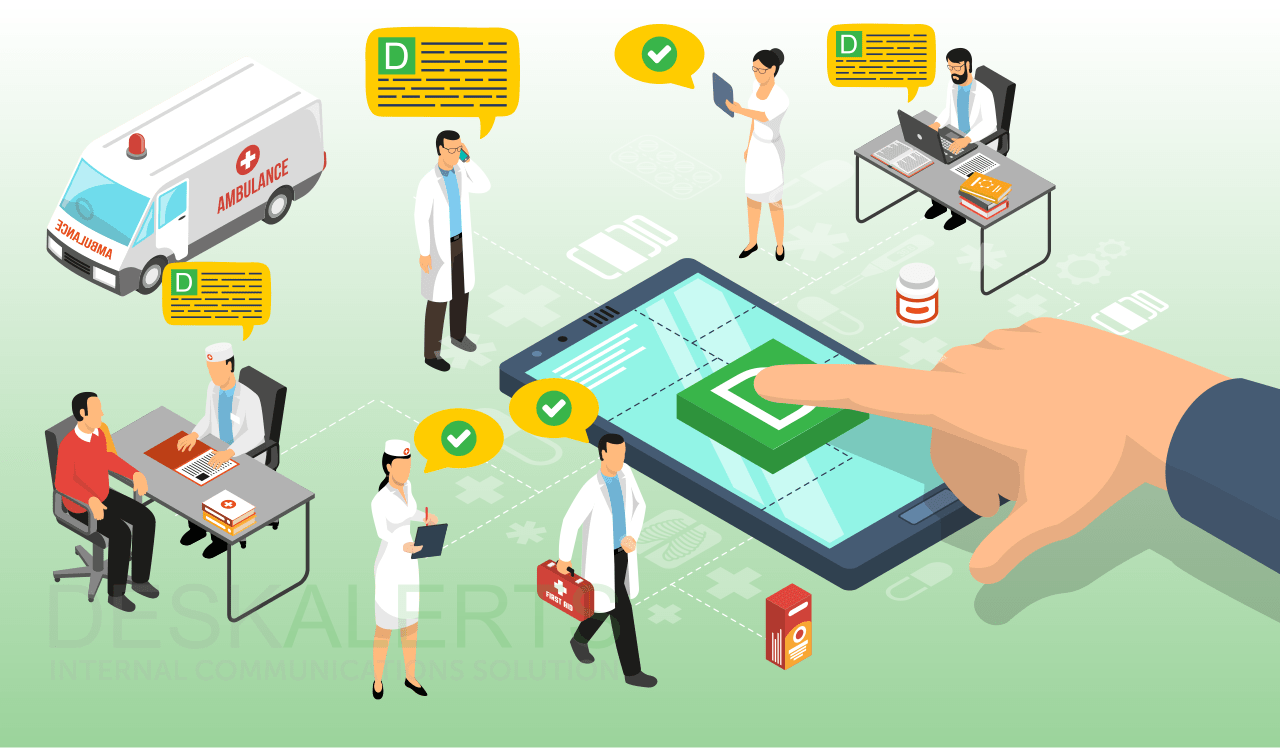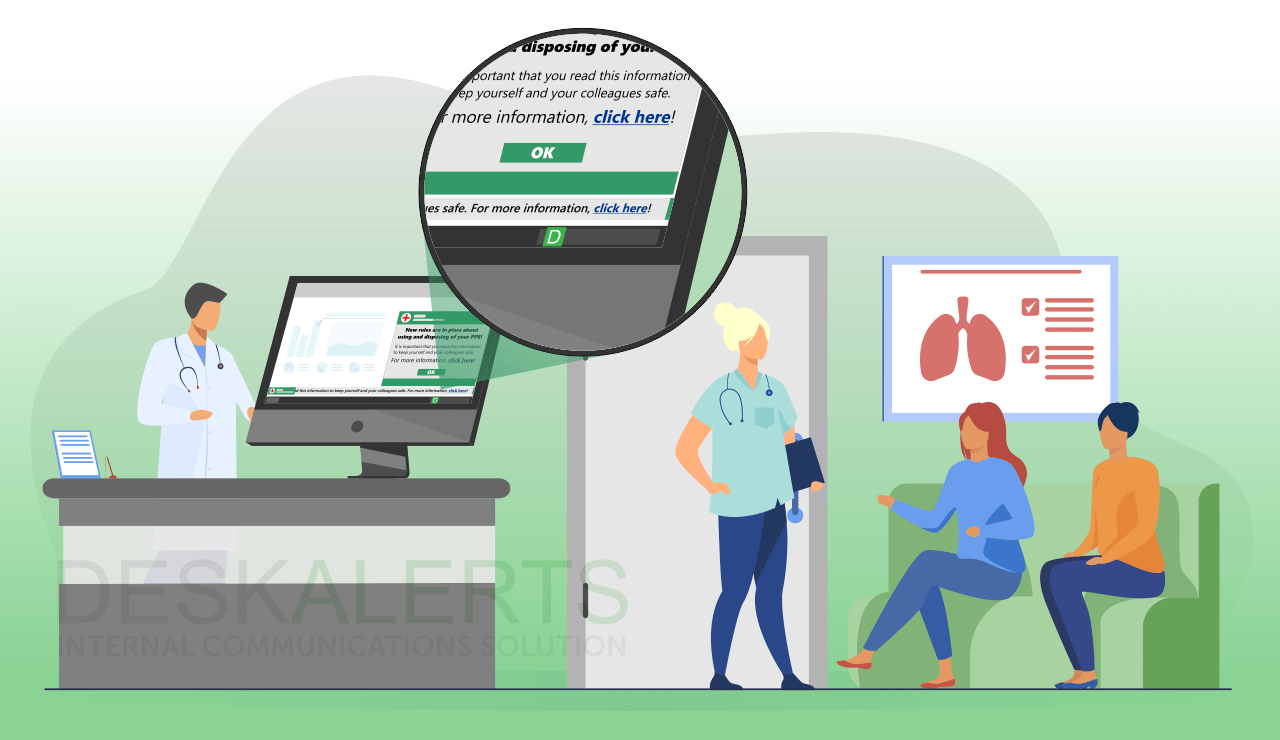The ultimate guide + free infographic
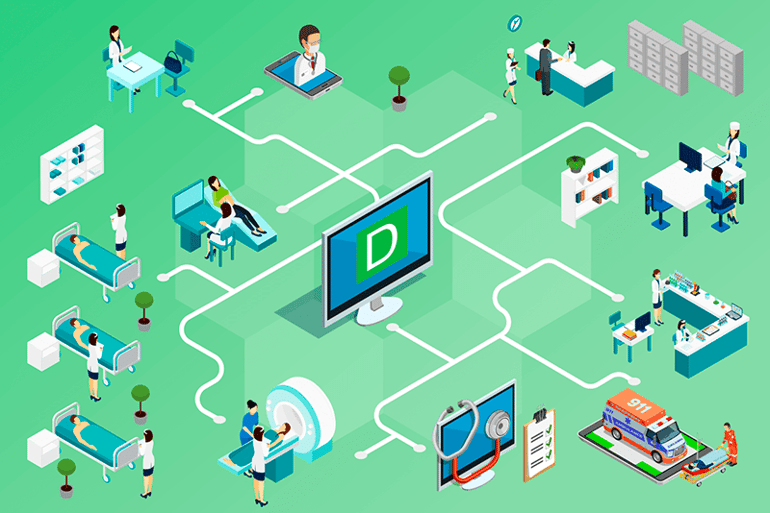
Hospitals and healthcare organizations have unique needs when it comes to internal communication. They are large and complex organizations where the stakes are high – if the proper information isn’t sent and received well internally it can literally mean the difference between life and death.
According to the Ponemon Institute, hospitals in the United States waste approximately $12 billion every year due to poor communication among care providers.
Inefficient systems and processes might be holding your hospital or healthcare organization back from reaching its full potential with internal communications. As 2021 approaches, it’s a great time to look at your systems to see if you can make any improvements and overcome common challenges in healthcare communication.
Download free infographic – "Effective internal communication in healthcare"
Challenges of communicating in hospitals and healthcare organizations
Hospitals and healthcare organizations can be large or can be small. They’re sometimes spread over multiple campuses. Staff work across different disciplines and on different shifts around the clock. The pace of work is often fast.
The COVID-19 pandemic has placed extra strain on healthcare organizations all over the world. In addition to running out of beds, ventilators and PPE, hospitals have had to postpone elective surgeries and turn patients away. Healthcare workers and their safety is also paramount, and the situation can change quickly.
Keeping all employees informed in this type of environment is a challenge at the best of times, let alone during a pandemic. The bulk of employees in a hospital and healthcare environment don’t have the type of job where they are sitting at their desk in an office all day long. Medical staff are on wards, consultation rooms or operating theatres dealing with patients. Some even work offsite and go to peoples’ homes such as nursing staff, meaning this workforce can have a mobile aspect to it.
Other challenges in healthcare communication include delays in nurses and physicians communicating with one another, which can have poor outcomes for patients. Alarm fatigue - where there are beeps and bells sounding off all the time due to the nature of the healthcare environment - can mean that employees “tune out” to important alarms is also a problem.
In this sector people are still quite reliant on devices like pagers which function in parts of hospitals that mobile phones can’t reach (because they are designed to block xrays). And IT infrastructure isn’t always reliable.
Funding is always an issue in the healthcare sector… there are limited funds to go around and quite often investing in internal communications is seen as “non-essential” even though it can have a profound effect on patient outcomes. Encouraging management and finance teams to see the importance of investing in internal communication improvement is a challenge in and of itself.
Email overload in healthcare
All of this makes traditional communication methods, such as email, even more challenging in this sector. Around the world, across a variety of industries, email overload has become a really big problem for communicators as employees are burdened by so many emails hitting their inboxes every day, they don’t have time to open them all. This means important information is missed.
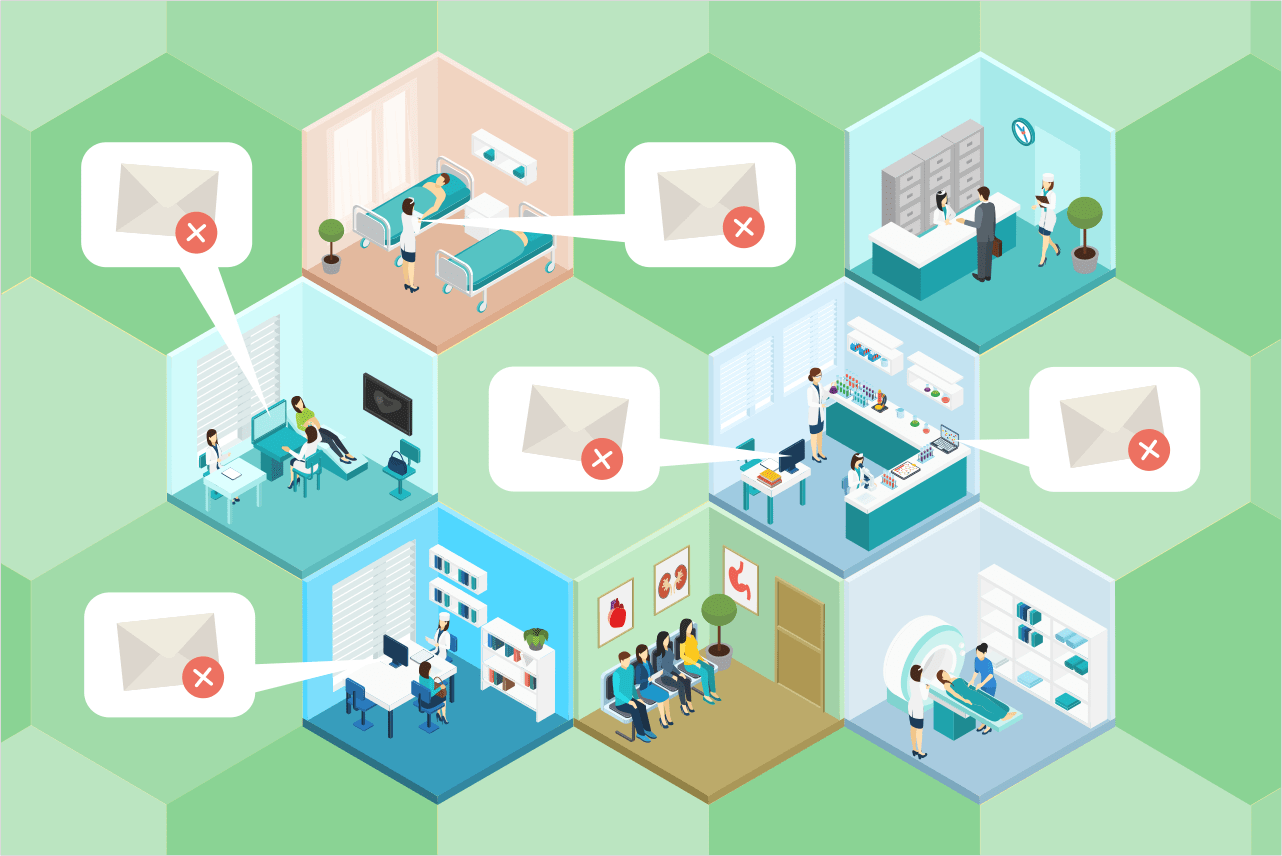
It’s one of the worst communication problems in healthcare.
For the healthcare industry, the email open rate is just 39% with a click through rate of just 6%.
This means if you’re sending an email with a hyperlink to important information - such as policy and procedure changes – it’s getting missed by most employees.
Employees don’t have the luxury of sitting in front of their computers and reading all their emails every day, so when they have the opportunity to check their emails they’ll scroll through them and filter for what they think is important.
For example they may read everything sent by a particular specialist because they will assume it is important, and overlook things that don’t interest them such as directives about employee parking. They may not open alerts from IT about system maintenance meaning they miss important information about outages and aren’t prepared for the impact it will have on patients and services.
Crisis communications: being unprepared can create problems
Hospitals and healthcare organizations deal with emergency situations every day, and having systems and processes in place to deal with that is a given. Hospitals often use a color code system to determine what an issue is and what has affected it.
Other times there are emergency and crisis situations that are out of the ordinary that hospitals need to be prepared to respond to. There can be large-scale emergency events with mass casualties that impact the hospital, for example when dealing with a terrorist attack or a natural disaster. The current COVID-19 pandemic is a good case in point - and many facilities have been at breaking point for months on end.
Other situations can arise that are unexpected and completely out of the blue.
A hospital in Melbourne, Australia, for example, recently had to cancel hundreds of surgeries because of a contamination scare caused by faulty washers failing to properly clean surgical equipment. This had a flow-on effect across the hospital – and other hospitals in that city – for more than a week.
Having a crisis communication plan in place that all staff understand, and can be easily adapted to different situations, is essential for communicators in the hospital and healthcare sector. This includes having appropriate channels – i.e. not just relying on email – in order to keep people informed, especially when a situation can escalate quickly.
CQC rating for UK hospitals and healthcare organizations
For healthcare providers in the United Kingdom, the CQC score is a challenge that is at front of mind for many.
Healthcare organizations are required by the government to show the public how they are performing via a rating system that’s carried out by the Care Quality Commission (CQC) so that patients can make an informed choice about their healthcare options and compare different services and providers.
The ratings are either “outstanding”, “good”, “requires improvement” or “inadequate”.
It stands to reason that where there is dysfunction in internal communications, this will affect the quality outcomes for patients and can impact on the CQC rating.
While CQC inspections have been suspended since March 2020 because of the COVID-19 pandemic, the CQC’s recent State of Care report has found that there is still a lot of improvement that many providers could be making. However it did praise organizations that had transformed the way they’ve had to deliver care in the months since the pandemic began, taking advantage of technology to improve outcomes.
Manual alert delivery increases facility exposure and vulnerabilities
Traditional communications such as faxes, radios, telephones and pagers are becoming obsolete… but are still all used regularly in hospital and healthcare organizations.
These methods of communication are often inefficient and don’t have the ability to quickly and easily reach large groups of people at once. Making multiple calls or sending multiple faxes, for example, is time consuming for the person disseminating the information, and this is time that can be better spent doing other things such as patient care or responding to and solving problems (such as bed shortages, or rostering issues).
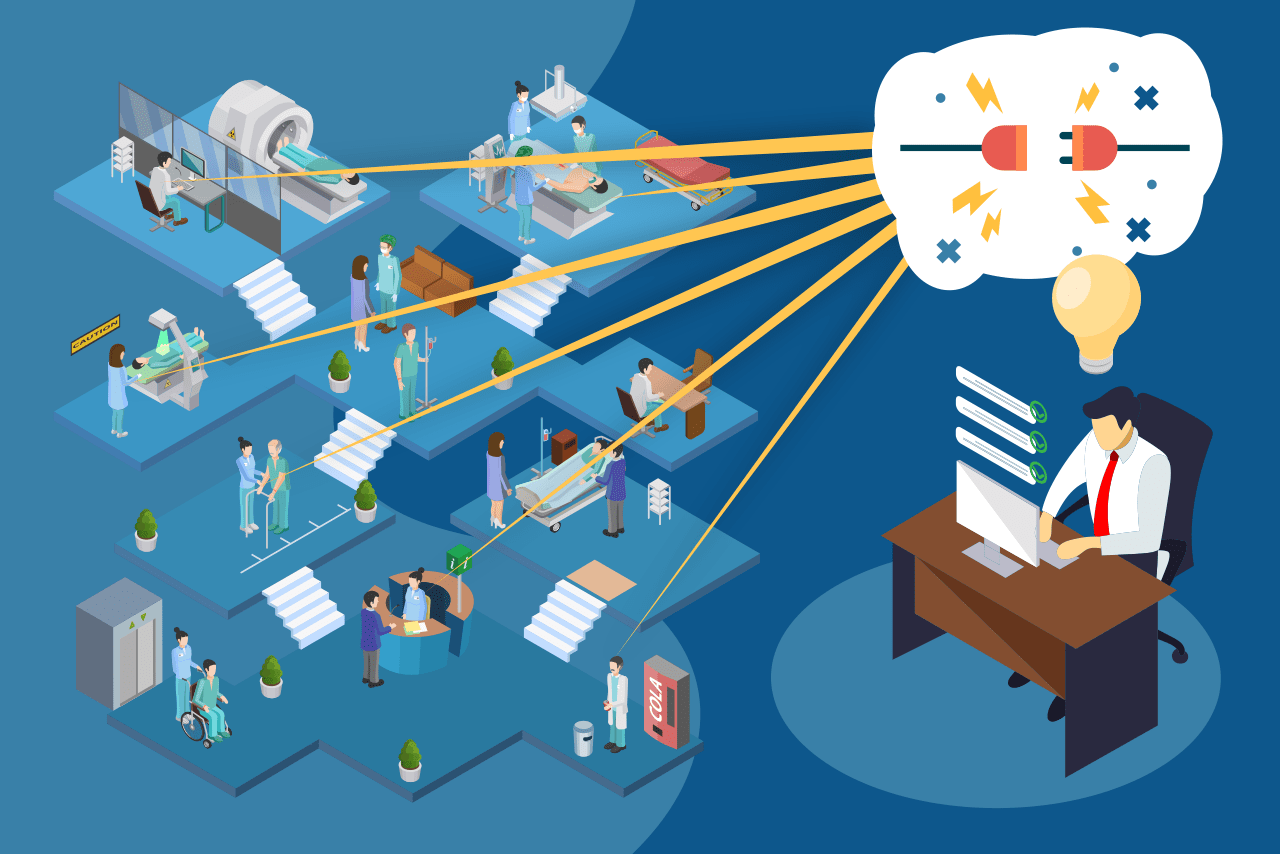
How an internal communication system can solve challenges in the healthcare sector
Many hospitals and healthcare organizations looking to solve their internal communications challenges have adopted mass notification or alerting software systems to improve how information is shared between management and employees and between employees within the healthcare environment.
These types of systems work by sending notifications to all computers in an organization that appear directly on screen, regardless of other software being used at the time, and don’t rely on email. They can also be sent to smartphones and tablets as push notifications.
The messages can take the form of pop-up notifications and can also be sent via scrolling ticker tape across a screen. Systems such as DeskAlerts have the ability to send custom corporate screensavers with important messages so blank screens can still be used to communicate with employees.
Sending information in this way means that it cannot be missed, skipped or avoided.
These systems overcome barriers and obstacles posed by email overload and outdated technology and solves communication issues in healthcare including:
- The ability to reach many employees quickly, which also helps enormously in a crisis or emergency situation.
- Messages can be sent to the entire organization, or just targeted to niche audiences. For example: surgical staff only, or employees who work in a particular ward. This means only essential information is shared with those who need to see it, which avoids people “tuning out” to your alerts.
- Alerting software assists with task management in a hospital environment – for example bed capacity alerts, resource management and so on. Alerts can be sent to coincide with established color codes already in use in the hospital.
- Because mistakes in healthcare organizations have the potential to cause harm – even death – to patients, having employees be accountable is essential. Alerting software has a statistics module that enables you to see who has seen, and who hasn’t seen, particular messages. This means that employees can’t make the excuse they didn’t know about something – if you need to take disciplinary or legal action later on, you have proof that they saw the information.
Think of it as having a manager standing next to every employee telling them about what they need to do. You can’t physically assign a manager to stand with very employee all day long, but you can have the next best thing with DeskAlerts.
Other benefits include:
1. Building corporate knowledge
You can use alerting software to inform your employees about new updates to facilities, enhanced processes, patient care issues and inspire them to perform well.
It can be used to improve the induction processes for new staff and to drive people to the hospital’s intranet site to learn more details.
Sending quizzes can help to gauge the current understanding of systems and processes, or to determine if information campaigns have been successful with knowledge retained.
2. Improve employee behaviors
Billboard-style screensavers on computer screens and other digital screens can be deployed throughout the hospital to communicate your values. This can help to enhance patient satisfaction, improve HCAHPS scores and enhance operational efficiencies.
3. Embed cultural change
The newsletters function can be used to share positive healthcare stories about innovation, stories of commitment and successful patient outcomes to inspire staff. This encourages the adoption of best practice and helps to boost engagement and improve workplace morale.
4. Improve training attendance
Employees generally love having opportunities for learning and development. In organizations such as hospitals and healthcare facilities, they can be too time-poor to actively seek out and research opportunities themselves, An alerting system can help you to more effectively communicate different training opportunities for your staff they may not otherwise know about.
With the RSVP function you can also drive higher attendance by making it easier for people to indicate their interest in attending, and send them reminders so they don’t forget.
The system can also be used to provide ongoing training and reminders about hospital processes such as response procedures, hospital codes, updates to computer systems and compliance measures.
5. Drive immediate actions
Important and time-critical information can be sent quickly with alerting systems. This means when you need an action to be taken immediately, people will be notified instantly. Examples include when you need to evacuate the building because of an emergency or if there’s an IT outage and you need people to use an alternative system.
This enables you to reduce the time and resources that are used in responding to multiple queries, and to focus efforts on resolution instead of answering questions.
Communication challenges in healthcare case study 1: coordinating a major change initiative
Peterborough and Stamford Hospitals NHS Trust is part of the UK healthcare system and has 4000 employees located across two sites.
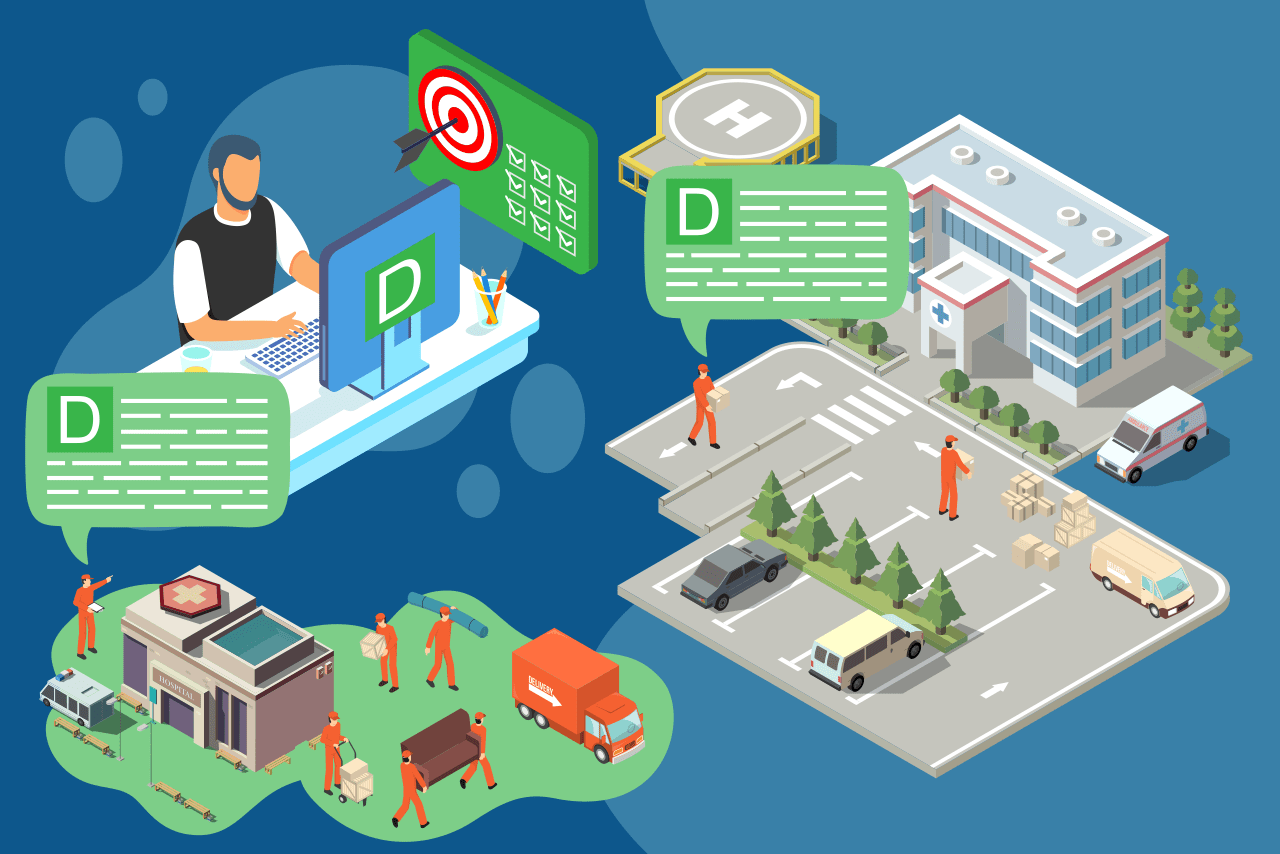
The hospitals moved from three old, outdated buildings to a new purpose-built state of the art building and had to ensure they had an effective and robust way of communicating internally about the move and any issues. At the time, they were relying on email.
They soon realized that they needed to have a way to provide instant messages quickly and easily to help manage the safe transfer of 600 patients and 3,500 staff to the new hospital facility. With limited funds, they turned to DeskAlerts to provide a cost-effective solution.
The DeskAlerts team created a custom message template containing the organization’s logo and colors and was included in their package.
In the lead up to the hospital move, DeskAlerts was deployed to every computer in the organization. Initially it was used to send messages to employees about system outages. During the move process it was used to notify when certain systems were being moved, as well as organization-specific issues that were caused by the move process.
Hospital staff said that it was an invaluable tool throughout the process that kept everyone informed in “real time”.
The hospitals have continued to used DeskAlerts even after their successful move process. It’s now their main communications system that is used for urgent messaging to all staff.
Lee Loads, an NHS representative said “…we find the product very easy to use and it works excellently.”
“The client that resides on the PC is small and does not cause any conflict. Upgrades to servers and clients are very easy to undertake and the DeskAlerts support team are contactable very quickly,” Lee said.
Read the case study: Ensuring the Safe Transfer of Patients and Staff to the New Hospital.
Communication challenges in healthcare case study 2: handling a live emergency
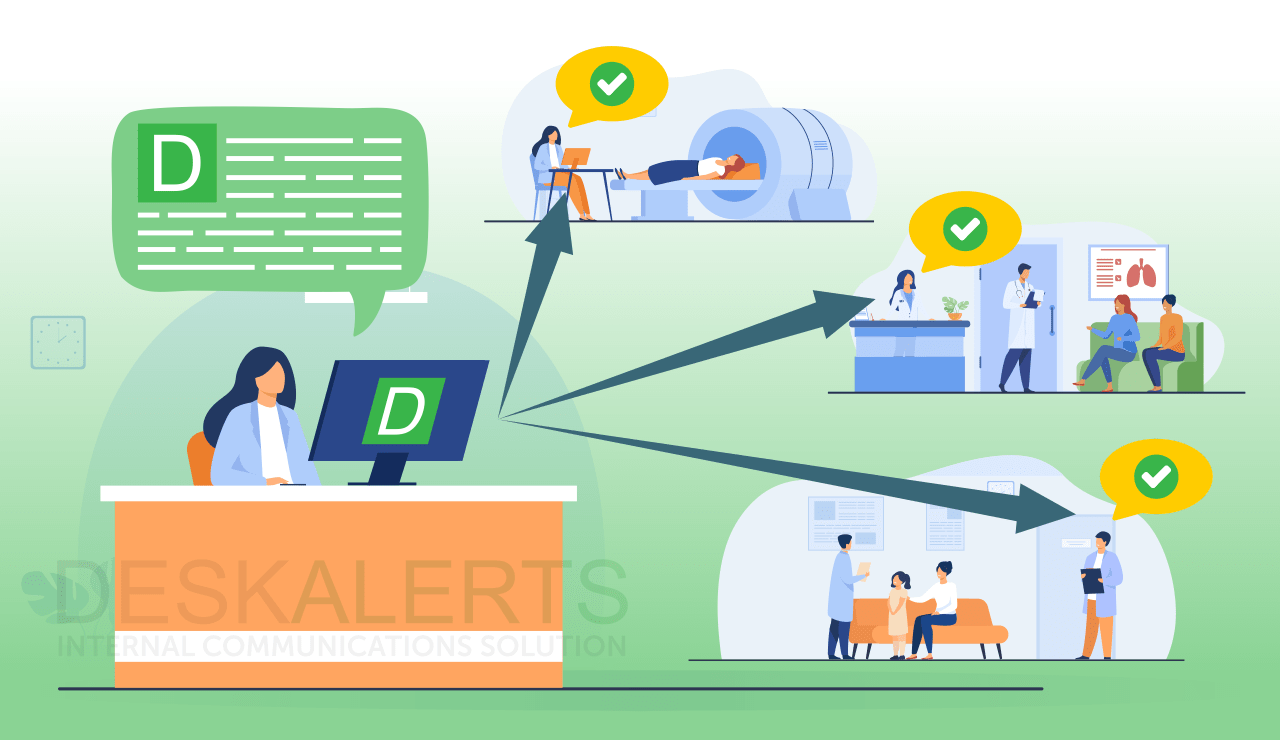
CHU Saint-Pierre is a university hospital located in the Belgian city of Brussels. The organization needed a dedicated notifications channel to keep their employees informed on a daily basis, and also wanted a system that could be used in the event of an emergency.
They implemented DeskAlerts internally as a backup solution for their primary email and telephone notification channels. They found it to be a reliable internal communications channel - but its real value really came to the fore when terrorist attacks took place in the city in March 2016 which saw the other channels overloaded and rendered inaccessible.
Having the secondary messaging channel meant that hospital management and employees were better equipped to handle the situation.
On 22 March 2016, there were three coordinated suicide bombings in the city of Brussels that left 32 civilians dead and more than 300 others injured.
Shortly after the explosions, the hospital went into a state of alert and the phone network became overloaded.
Geoffrey Collet, the CHU Saint-Pierre Application Administrator said that DeskAlerts was used to lower the number of internal calls.
“When the external phone network went down, we used DeskAlerts to notify the employees about switching to SMS messaging,” he said.
“After the bomb alerts cured again, we used DeskALerts to notify employees about police with sniffer dogs operating in our units.
“Without DeskAlerts, this day would have been much harder to manage,” he said.
Read the case study: Reliable Hospital Emergency Communication During Terrorist Attacks.
Do you want to know more about improving communications in hospitals and trusts?
Download free infographic – "Effective internal communication in healthcare"
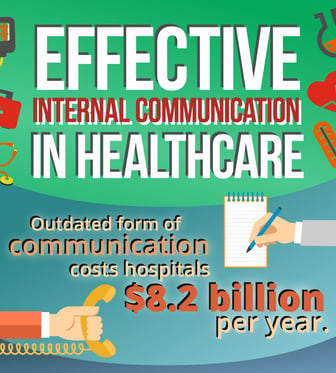
 Caroline Duncan
Caroline Duncan










